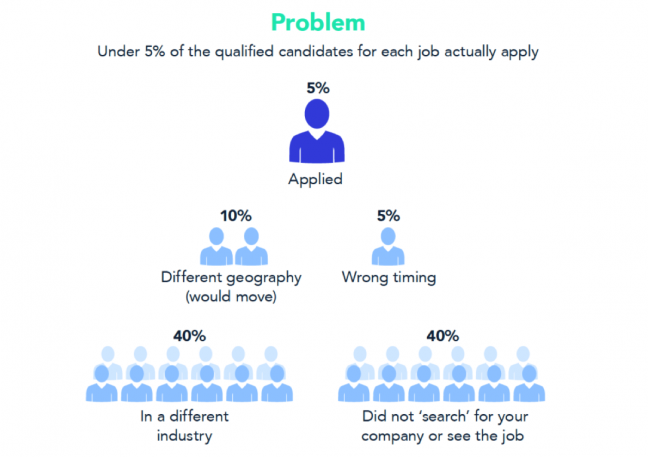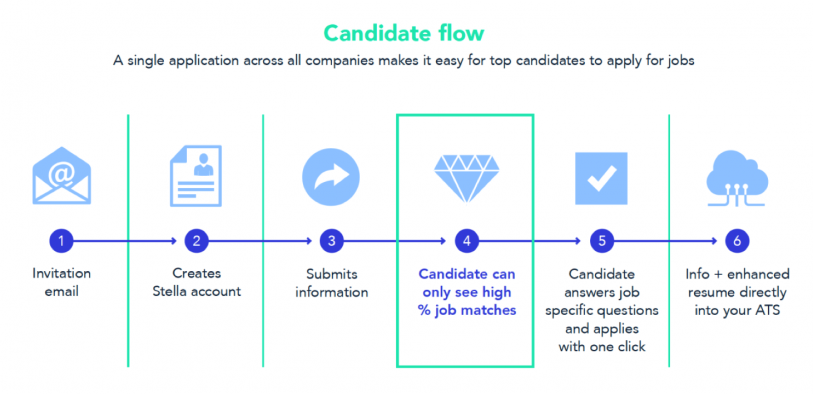It’s challenging on both sides of the table: for job hunters and hiring managers. This year, we’ve seen a spate of startups tackle the pain points from writing resumes to landing interviews to assessments that surface the right opportunity at exactly the right time. Now, Stella.ai aims to bring several of those solutions together in one place.
“We are a marketplace business,” explains Stella.ai’s executive chairman and cofounder Adam Zoia, “We serve both [candidates and companies].” As such, Stella.ai launches out of stealth today with more than 100 major organizations that have already been actively using it, including the likes of Unilever, Hilton, JetBlue, Rackspace, Charter, Allergan, HBO, Revlon, and Estee Lauder.
Zoia says that some of the larger companies in its marketplace receive as many as 4.5 million resumes per year, globally. Others, he says, have gotten 10 million applications for open jobs over the course of a year. Obviously, only a tiny fraction of these applicants can get hired, says Zoia. By making this “tremendous sourcing funnel” available in one place and letting AI do the matching, Zoia maintains that Stella can “redirect people where they are best suited.”

This also saves the candidate the enormous amount of time it takes to find openings and tailor a resume and application to each one. Zoia says it can take hours to do this. And some estimates suggest that the probability of getting a job interview from one application is as low as 8.3%. Zoia likens Stella.ai to the common app used by universities for prospective college students. “They apply one time,” he says, “and it’s one click to apply if a job is identified for them. It’s faster and cheaper.”
Zoia says the marketplace should see the cadre of candidates grow to exceed 3 million during 2018, given the large number of applicants some of the member companies receive. But the fee for hiring someone through Stella.ai is a flat $2,000 (or $500 for an hourly worker). Companies also get a credit for referrals, akin to an internal employee referral program. Candidates can join for free.

Of course, AI can only take this process so far. Recruiters and hiring managers will need to provide the human touch when making the final call as to whether the candidate lands the job or not. But Zoia maintains that AI will enable individuals to discover jobs they might not have surfaced themselves. “There are a lot of unfilled jobs,” Zoia says. “If you pool that talent and reroute them, you actually help the economy.”
Recognize your brand’s excellence by applying to this year’s Brands That Matter Awards before the early-rate deadline, May 3.